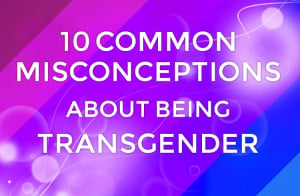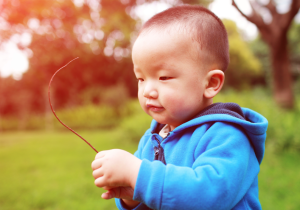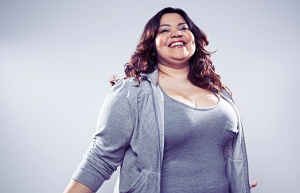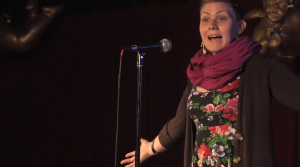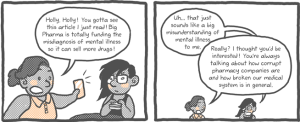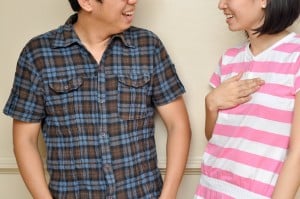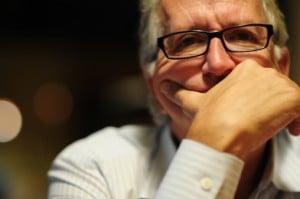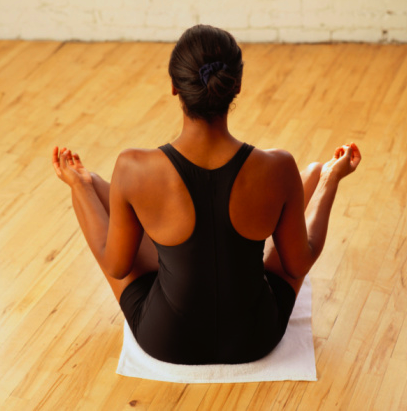
Credit: Clutch
When I was sixteen, I was led into a strange wooden building with an A-Frame roof that almost licked the ground – or maybe it just seemed that way. I was led to a white and blue desk where a woman sent me to sit in one of a series of pale, blue chairs.
From there another pink-clad woman flashed a six carat smile waving me into a small room cramped full with my parents, myself, and a woman named Lynn who always wore cute shoes.
I later found out that she wrote on my file, “Always cries.” I was diagnosed with severe anxiety and mild depression.
Lynn was a child psychologist, because I was still a child. She sent me to a child psychiatrist where I sat in a bright red chair among small children and their mothers. I don’t remember her name.
I was sent there to cry and to receive two bottles of pills: Prozac and Klonopin. Every week I went to Lynn to cry. Twice a month I sat in the bright red chair to cry and to receive two bottles with tiny, white pills.
I needed help. People began to see that I needed help so they sent me into small boxes where kind women fed me nice words and sometimes pills. And it was helpful.
One day, I really needed help so I devoured a mouthful too many and told my friend I thought my chest would explode in gym class.
It was very helpful until the day that it wasn’t helpful anymore, and I cried and decided I didn’t want to take them again. I didn’t even want to have the pills I owned. I didn’t want to see them or feel bounce off the walls, crazy-eyed, plastic-hearted happy.
Over the years, my anxiety has been a struggle. Not many people know that.
Not many people have been in the same room as me when I have crumpled and heaved because I am the one who is always OK when nothing else in the world is OK. I believe the scientific term is stoic, which roughly translates into I do not break in public.
But I do forget to breathe sometimes on my carpet all alone and eventually I remember that I live in a house and that house has heat and running water and a beautiful son and we both of us have clothing and usually money and always food and always always friends and family that would do anything to help us.
And then I remember to breathe – sharp and shallow and slick-footed.
If I’m honest, I’ve gone to various extremes at different points in my life to try and control that chest-crushing, head-punching anxiety – once I even spent a few months on medication.
Seeking Healing, Not Medicating
At some point in my adult life, I had to realize that anxiety shouldn’t be medicated as an afterthought, but interacted with like a small child or a lifestyle choice. So finally, I made a lifestyle choice.
When the father of my unborn child told me that my body was weak and disgusting, I unraveled a green yoga mat outside his bedroom door and let my body lean into a familiar worship.
I gave thanks with my legs for the strength to walk away. I praised my chest for its deep, cathartic, even rhythms. May they persist through anything. I dug my collar bones deep into the earth and swooped into urdhva mukha shvanasana: upward facing dog. I made eye contact with the sky through a chipping white ceiling, like I had X-ray vision.
I know that you’ve heard it all before. Yoga relieves stress, yoga makes you flexible, yoga is meditation/exercise. That’s quite true, but not the point.
It probably fluctuates from person to person, but for me, the point of yoga is remembering.
Remembering that it was a miracle that my body created human life – a miracle that my son was born healthy amidst a whirlwind of uncontrollable stress wielded by the man who should have done anything in his power to protect him – not the other way around.
Remembering that my breath, like my human flesh, like my expanding heart, like the pliability of my muscles and limbs – can stretch lifetimes farther than I would ever be narcissistic enough to expect.
Remembering that to sit down and have a physical conversation with oneself is as important as sitting down to have a verbal conversation with your loved ones. That you can learn so much by listening.
Remembering that everyday, I do only what I believe is right, and if perchance it is not, I always tried and that is beautiful.
Remembering that strength isn’t always measured in metal circles, or crashing, pulley-stringed machines, or by scales, or strangers’ muffled murmers. Sometimes it is in the eyes, sometimes the chest, or the fingers or the toes.
Remembering that balance is an acquired skill – one that carries over from the physical into the mental and the spiritual.
What Makes Yoga a Lifestyle For Me?
It took years to disentangle the messages that made me ignore reality (great grades, loyal friends, athletic accomplishments) and succumb to illogical anxiety (I’m stupid, I’m going to fail, people are lying to me, I’m so fat).
That is where therapy was necessary. I needed someone – a stranger, someone objective – to walk me down the line, one-by-one and check off each anxiety. Cross them out so I could face them accurately and armed with facts.
When I was pregnant, complete strangers would pry into my personal life. “Are you married? Are you going to be?” Insinuating maternal, intimate, and moral inadequacy
Meanwhile, my child’s father never asked how I felt or if I was eating healthy or about doctor visits. But every time we spoke, he asked how much weight I had gained.
I was repeatedly warned how excruciating labor would be. “Just get the epidural. Right away.”
While everyone has a right to their own birth experience, no one else could have known what my body is capable of achieving or withstanding. In hindsight, I was stronger than I expected to be.
People openly stare at me when I’m carrying my son, his diaper bag, and armfuls of grocery bags. “I do this all the time!” I want to scream.
Yes, it’s difficult and some days it does all but break me – not physically, but emotionally to think how some people (friends, family members) have help or first floor entrances – but I do this all the time.
I walk into college classrooms where male classmates arrogantly and juvenilely boom, “Well, obviously single mothers are, like, handicapped . . .”
Yay, more complete strangers telling me how weak and incapable I am. And thank goodness they warned me that it’s impossible for my talent or intellect to ever make up for having greater responsibility outside of academia.
It’s like every moment of every day I am soaking it all in – the cultural caricature of a 24 year old, female, student, mother. Single mother.
And most days, these messages only fuel me to silently and efficiently demonstrate the falsehoods in these stereotypes.
But sometimes – sometimes, it sinks in. And I can’t breathe. And I have no idea why. I thought that I could do this. Why I could stand up. Or leave my apartment. Or mold a human life.
And I can’t explain to you the process by which I overcome these thoughts except to say that when I finish my yoga practice, I have better self-awareness, better body image, more faith in my body’s strength and ability, and more confidence in my mental dexterity.
After my practice, I have connected with another person, an instructor or a friend, and with myself. Today, the only pill I ate was a gummy, grape-shaped (grown-up) vitamin
I did not have an anxiety attack.
Today, I rolled a green mat out across my carpet. I sang and danced with my son. I watched Curious George. I learned some guitar, did some homework, and wrote this article.
And the only time my forehead pressed to the ground was with deep, even breaths and silent thanks in a simple-seated forward fold.
Kelsey Lueptow is a Contributing Writer to Everyday Feminism and a small town amateur yogi, poet, and feminist from Wisconsin. She’s a single mother and seasonal waitress working on a Bachelor’s degree in Creative Writing and Women’s Studies. Caffeine addict and book enthusiast, Kelsey spends her time playing with her son and hanging out at coffee shops.
Search our 3000+ articles!
Read our articles about:
Our online racial justice training
Used by hundreds of universities, non-profits, and businesses.
Click to learn more








